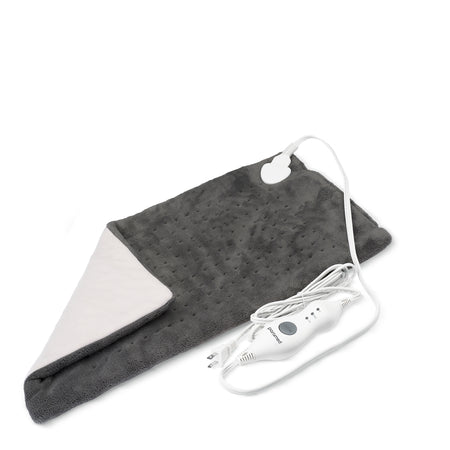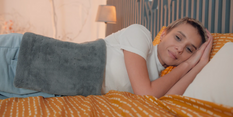How to stop and prevent a migraine attack
Migraine headaches are considered to be one of the most painful types of headaches. They seriously affect quality of life and can reduce ones performance. They can sometimes signify a formidable illness, but with standard migraines, pain often disappears after a few hours and does not cause serious harm. Many people experience such attacks regularly. A migraine can completely deprive a person of sleep, and they destroy careers and personal lives. Learn how to overcome this disease and how to stop a migraine before it starts in the following article.
Migraine types
Headaches can become chronic and negatively impact one’s life, both socially and in the workplace. There are different types of headaches which differ from each other in their causes and methods of treatment.
According to the classification used by modern neurologists and doctors of other specialties, migraines are divided into two main types:
- Migraine without aura
- Migraine with aura, also referred to as ‘classic migraines’
The division into these two types of migraine is based on the presence or absence of specific and completely reversible neurological symptoms that precede the development of a migraine attack, called aura.
Basilar migraine
Basilar migraine, or, according to modern classification, migraine of the basilar type, is one of the varieties of migraine with aura. They develop in the basilar artery, which is one of the larger arteries in the brain. The involvement of this artery determines the symptoms of the migraine aura, characterized by impaired speech, tinnitus, dizziness, hearing loss, double vision, impaired coordination, impaired consciousness, and bilateral sensory impairment.
As with any other variants of migraines with aura, with basilar migraines, the manifestations of the aura last no longer than one hour and are entirely reversible. Most often, this variant of migraine occurs in young people.

Vestibular migraine
Vestibular migraine is another type that can occur with or without aura, in which vestibular involvement symptoms accompany a headache attack. These symptoms include feeling dizzy, hearing loss, imbalance, and tinnitus; it is collectively referred to as Mignère's syndrome.
Ophthalmoplegic migraine
A rare condition known as ophthalmoplegic migraine was previously considered a type of migraine, but not anymore. The results of studies during which an MRI of the brain of patients with this form of migraine was performed showed that this pathology is a consequence of an inflammatory disease of the cranial nerves: neuropathy. Ophthalmoplegic migraine is manifested by an attack of migraine-like pain, accompanied by double vision (diplopia) and drooping of the upper eyelid (ptosis). This disease is most often diagnosed in children. Currently, ophthalmoplegic migraine is not classified as a migraine, but as a neuralgia and neuropathy.
Familial hemiplegic
Familial hemiplegic migraine, in addition to migraine symptoms, causes temporary unilateral paralysis that resolves after an attack. This type of migraine usually affects several family members, and susceptibility to this type is inherited in an autosomal dominant manner. This type of migraine occurs rarely.
Retinal
With the so-called migraine of the retina, in addition to the headache, there is a slow, progressive loss in the visual field of one eye, which eventually recedes completely after the end of the attack. Sometimes, someone who is already visually impaired cannot see anything with one eye for several minutes.
During menstruation
A relatively common form of migraine, in which an attack occurs 1-2 days before menstruation or during the first three days of the cycle. This migraine is most likely caused by a drop in female sex hormones during the menstrual cycle.
Cyclical vomiting syndrome
Cyclical vomiting syndrome is characterized by episodes of severe bouts of vomiting that have no apparent cause. These episodes can last hours, or days, and are interspersed with relatively asymptomatic periods. Each episode is similar to the previous ones: they usually start at the same time of day, last the same amount of time, and are accompanied by the same symptoms and intensity levels. Cyclical vomiting syndrome may be associated with migraines. Attacks can be severe and afflict the patient for several days.
Chronic migraine
The International Headache Society defines chronic migraines as a headache that occurs fifteen or more days per month for more than three months, where the headache has migraine features for at least eight of those days.
For a headache to be considered a migraine attack, it must have two of the following five features:
- The pain is moderate, or severe, and often intense.
- Pain can be localized to one side of the head or on both sides at the same time.
- Headache symptoms that feel as if they are constricting the head. or are throbbing in nature.
- Pain worsens with exertion or movement.
- Headache is accompanied by nausea, vomiting, and increased sensitivity to light and sound.

Migraine without aura
A migraine without aura is the most common type of migraine, affecting 60-70% of people who suffer from migraines. The classic signs of migraine without aura are:
- Unilateral throbbing headache symptoms lasting 4-72 hours (in the absence of effective treatment).
- Moderate or severe headache intensity.
- An increase in the intensity of the headache when walking or during other regular physical activity.
Additional symptoms, including nausea, vomiting, and increased sensitivity to light or sound often accompany migraine headaches without aura.
It is important to note that a diagnosis of migraines can only be made if the patient has had at least five attacks that match the description of a migraine and only if there are no other causes of headache, such as cerebral aneurysms, brain tumors, intracranial hemorrhages, etc.
What are aura migraines?
As the name of this type of migraine implies, migraine with aura is characterized by aura: specific neurological symptoms that precede the development of a migraine attack. Aura manifestations include sensory, visual, or speech symptoms that gradually develop and last no more than sixty minutes, ending with the development of a typical migraine attack, immediately or within an hour after the aura begins.
Causes and symptoms of migraine with aura
The main symptoms are:
- Visual symptoms: flickering stripes or spots, blurred vision.
- Sensitive symptoms: tingling sensation, numbness.
- Speech symptoms: speech disorders.
The most common type of aura is the aura with visual symptoms. Interestingly, in most patients suffering from migraines, the manifestations of the aura cover the part of the body opposite to the side where the headache is then felt; for example, blurred vision in the right eye in left-sided migraine. What causes auras in migraines? While aura symptoms may be different from person to person, they generally reoccur in the same manner for an individual. A change in aura symptoms from attack to attack is not characteristic of migraines.
Migraines with aura occurs in about 30% of people diagnosed with migraines. In contrast, the aura symptoms are completely reversible, and an examination of the patient in the interictal period would not reveal any visual, speech, or sensory disturbances.
How to recognize a migraine attack — main symptoms
Migraines have a symptomatology that can be misinterpreted as a common frontal headache. To find the proper treatment of migraine headaches, you need to know the symptoms. However, a migraine is distinguished from classic malaise and other types of headaches by several specific factors:
- It has a characteristic intense throbbing pain reminiscent of acute toothache, but in a different location.
- The intensity of the pain is quite high, and in some cases very high. It can deprive a person of the opportunity to function normally, forcing them to think only of reducing the pain. Sensations may be accompanied by increased sensitivity to, and sometimes fear of, light and sound.
- Pain, as a rule, is localized to one half of the head, covering a part of, or, the whole hemisphere. This is the most striking symptom, thanks to which the presence of the disease can be determined.
What may be the causes of migraines?
It was previously not possible to establish the exact cause of migraines. However, some concomitant factors catalyze the manifestation of acute symptoms. These include:
- Neuralgic causes: Constant or periodic stressful situations, experiences, or overwork can provoke a migraine attack.
- Hormonal drugs: Taking hormonal drugs can provoke a sharp change in the body's hormonal background, leading to the onset of a migraine attack. These agents also include hormonal contraceptives.
- Unbalanced diet or alcohol consumption: One of the main irritants that cause a migraine attack is alcohol, especially sparkling wines, cider, and champagne (carbonated alcoholic drinks). Also, various foods and their combinations can cause an attack, including fish, cheese, chocolate, and nuts.
- Environmental factors: Environmental factors include sudden changes in weather, such as fluctuations in atmospheric pressure, temperature, and microclimatic conditions, or traveling to other climatic zones for several days or hours.
How to treat migraines at home
If a patient is diagnosed with migraines, the doctor will select a treatment while considering many factors, including the results of the examination, among other considerations, such as:
- Drug therapy is symptomatic. The main goal of drug therapy is to reduce the intensity of migraines. The doctor selects medications for migraine treatment considering the form of the disease, the patient's state of health, and the nature of the migraine attacks.
- When pain is not intense, non-steroidal, anti-inflammatory drugs may be prescribed.
- With infrequent attacks and mild forms of the disease, anilide medications effectively help against migraines in combination with the effect of vasoconstriction.
- With neck muscle spasms, it is necessary to expand the vessels by applying a heating pad to the neck area and a mustard plaster on the back of the head. Such a heating pad can be purchased in the Paramed store. You can also take a hot shower to aid in relief.
- Triptans for migraines with a vasoconstrictor effect.

It is important to remember that migraine medications are selected for the patient and prescribed only by a doctor since uncontrolled medication can cause side effects and complications that will lead to a serious deterioration in health.
Non-drug methods include the implementation of a healthy work and rest regimen, the exclusion of products that induce migraines, the cessation of drinking alcohol and smoking, and maintaining a proper diet.
Among the best home remedies for migraine relief are:
- Neck massages
- Acupuncture
- Yoga
- Consuming ginger
- Feverfew plant extract
- Peppermint oil
- Avoiding food triggers
- Acupressure
If a migraine attack has already begun, then it is necessary to:
- Do your best to calm yourself and stop any work, especially physical.
- Eat or drink something sweet if possible.
- Take a warm shower or bath in low light. Many patients note that water helps them relax.
- Rest in a dark, well-ventilated room.
- Gently massage temples, forehead, neck, and shoulders.
- Put a cold compress on your head and lie down.
- Take medicine for migraines.
- Regular price
- Sold out
- Sale price
- $24.95
Is it possible to prevent a migraine attack?
When considering the impact both the environment and climate change have on our health, it is unsurprising that more people are experiencing headaches. Sometimes, these sensations are truly painful and can develop into a chronic migraine. However, there are several ways to take care of yourself and prevent this disease in advance.
Deal with stress
Of course, getting rid of sources of stress and anxiety is not as easy as it might sound. Stress causes chemicals and hormones in the body to change, leading to migraines, which can provoke even more stress — a vicious circle. Physical exercise and working on one’s state of mind can help solve this problem. Some great methods for getting rid of a migraine would be meditation, hot baths, yoga, rest, and quiet activities, such as reading.
Take care of your sleep
Maintaining a proper sleep schedule is the basis of good overall health. Lack of sleep and irregular nighttime rest can directly affect headaches. One needs to develop a full-fledged sleep regimen to aid in dealing with headaches. Always make sure to go to bed at the same time, and get out of bed at the same time, getting between 7-8 hours of sleep. Daytime sleep can disrupt this cycle and is not recommended as doing so can cause additional stress. The most important thing in migraine prevention is to regulate the sequence of sleep and wakefulness.
Take B Vitamins
Some research says that taking vitamin B2 supplements regularly can help prevent migraines. Since the B vitamins contribute to energy production in the body, the concentration of chemicals that protect against headaches increases. Experts recommend consuming 400 mg of vitamin B2 daily.
Drink water
Dehydration is one of the migraine triggers. It negatively affects the body and can lead to the brain receiving less oxygen and blood. As a result, pain fibers will activate and a migraine attack will begin. Therefore, giving the body the right amount of fluid is necessary. You need to drink about two liters of water daily, which will help to cope with headaches and prevent uncomfortable sensations.
Review your diet
Even if certain foods cause headaches, migraine headaches can take hours to develop, making it difficult to identify which foods are contributing to migraines.
Determine your triggers
A migraine, on average, robs a person of three days a month. For a person suffering from headache attacks for ten years, this equates to a whole year of time devoted to suffering from migraines; a devastating outcome.
Over time, the chances are high that a migraine sufferer can identify typical triggers for themself and organize their life so that these attacks occur less often. About 90% of all migraine sufferers claim to have identified at least one trigger that affects them. The most common are physical or emotional stress (77%), menstruation (72%), bright or flickering lights (65%), and different smells (61%). Keeping a pain diary will help to identify these triggers, as controlling them is often an effective way to prevent migraines.
Food that may trigger a migraine attack:
- Alcohol, especially red wine
- Aspartame sweetener
- Beans and other foods containing tyramine
- Caffeine (often found in foods, drinks, and medications)
- Cheese and yogurt
- Chinese food or other soups and foods containing monosodium glutamate (MSG)
- Processed meats containing sulfites, such as bacon, sausages, salami, and ham
- Vitamins and herbal supplements (some contain caffeine or active ingredients that can make headaches worse)
If you want to prevent migraines by controlling triggers, there are some important things you need to know:
- Trigger factors are unique for everyone. Some patients are uncomfortable with stress or red wine, and others with loud music or short naps.
- If just one factor causes an attack, this is usually an exception. A headache is usually triggered by a combination of at least two triggers.
- Some triggers can prevent or relieve migraines at the same time, such as caffeine.
- The best way to prevent migraines is to organize your daily routine; there should be fixed meals and fixed sleep times.
- Migraine attacks can be triggered by stress. The degree of reaction to different events is unique to everyone. For many, a change in job, conflicts with colleagues or in the family, and lack of free time can cause a migraine attack. For students, overwork at school and disputes with other students are common causes of migraines. Therefore, it makes sense to find out what situations can become stressful to determine your sensitivity threshold so that you can learn to better cope with stress.
- Loud sounds, smells, and bright lights can provoke attacks. In such cases, they should be eliminated from your life as much as possible. Avoid noisy company, concerts, and watching movies in cinemas; use sunglasses, and install powerful hoods in the kitchen, etc.
- One of the more common migraine triggers is a disturbed sleep-wake cycle. To avoid a migraine attack, you should get up at your usual time on weekends (the same time as during your work week) and refrain from sleeping too long. This trigger may be most significant in people engaging in shift work or frequent, long-distance business trips. Even after one very restless night, the risk of a migraine attack increases significantly.
- To prevent migraines, you must identify triggers and then learn how to control them. A pain diary can help with this; bring it with you when you see your doctor to help them develop a treatment plan. It is not always possible to avoid migraine attacks, but effective drug therapy in combination with alternative and preventive treatment will help to reduce frequency and intensity.

When it's better to call a doctor
You should make an appointment with a neurologist for suspected migraines if you have the following symptoms:
- Blurred vision
- Floating objects before the eyes
- Severe paroxysmal, pressing, or throbbing headache
- Feeling nauseous or vomiting
- Dizziness
- State of drowsiness and weakness
- Increased irritability
For the doctor to quickly determine the nature of the pathology and establish its cause, be prepared to answer many questions:
- In what area of the head is discomfort localized? In the forehead, in the temples, on the back of the head?
- What is the nature of the pain? Is it pulsating, dull, sharp, migrating, etc.?
- How long ago did it appear and how often does it repeat?
- What additional symptoms accompany the headache, such as sensitivity to light or smells, or nausea?
- Do other family members suffer from headaches?
- Do you have a history of birth defects, craniocerebral trauma, neuralgia, or neurological infections?
Patients may be advised to keep a diary to record recurring episodes, provoking factors, and duration. A neurologist may also ask about your daily routine, the nature of your work, and lifestyle. After examining and receiving test results, the doctor will accurately determine the type and cause of headaches and select the appropriate treatment.
It is important to make an appointment with a neurologist to prevent unpleasant consequences.
Any severe headache or headache that lasts for a long period of time requires examination. See a doctor immediately if the headache worsens, the medications don't help, or the discomfort returns for days or weeks. If the disease is accompanied by visual impairment or dizziness, it is necessary to visit a specialist as soon as possible.
Medical tests you may need to take
Methods that can help identify the causes of pain:
- Examination by an ophthalmologist will allow them not only to exclude eye pathologies, but also to assess the condition of the vessels in the eye. The fundus of the eye is the only place in our body where we can directly see the vessels.
- Laboratory tests help diagnose inflammatory processes and allow you to exclude infections.
- Measurement of blood pressure, as high or low blood pressure can cause headaches.
- Doppler examination of the head and neck vessels reveals interruptions of the blood supply to the brain.
- Computed tomography of the brain makes it possible to see volumetric formations in the cranial cavity, areas of cerebrovascular accident, anomalies in the development of the brain, traumatic injuries, sinusitis, and signs of hydrocephalus.
- Magnetic resonance imaging of the brain and spine allows doctors to see the brain's structures, significantly helping them to diagnose tumors, small and large foci after a stroke, traumatic lesions, and a range of other diseases that can cause headaches.
- Consultations of narrow specialists. For proper diagnosis, it may be necessary to consult an ENT doctor, an ophthalmologist, or a psychiatrist, among others.
Takeaway
With timely access to a neurologist, it is possible to eliminate headaches. The doctor will select medication therapy and develop preventive recommendations to prevent relapse.
To fully recover, you will need to do the following:
- Follow medical instructions
- Normalize your schedule of work and rest
- Eliminate the causes of headaches (comorbidities)
- Use natural treatments for migraines
- Lead an active and healthy lifestyle
Your health is in your hands! Don't assume that recovery is expensive. A large part of a successful recovery plan depends on how willing you are to improve your life and follow medical prescriptions.




